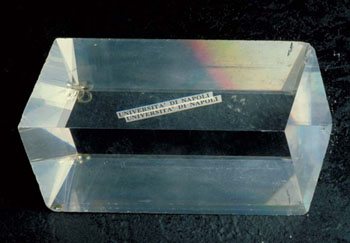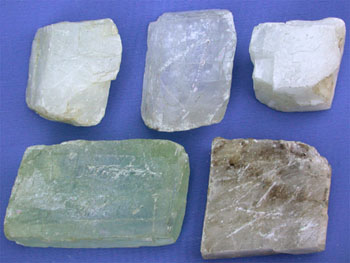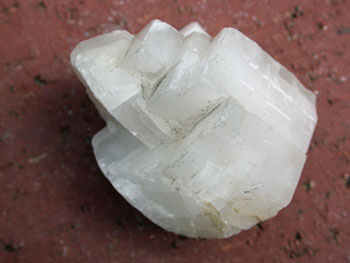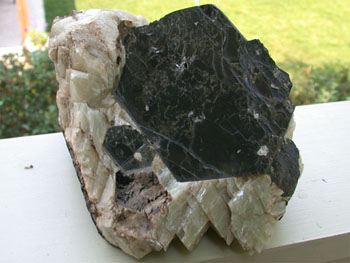Calcite and Dolomite: Carbonate Minerals
Calcite and dolomite are very similar minerals. Both have the same hardness (H = 3), the same rhombohedral cleavage, and are found in identical geologic settings. The best way to tell one from the other is the acid test: a drop of 1 M HCl on calcite produces an instant, obvious fizz; a drop on dolomite produces slow or no obvious bubbling. Frequently, you have to use a knife point to powder a small area of dolomite to get a visible reaction to a drop of acid.
|
|




